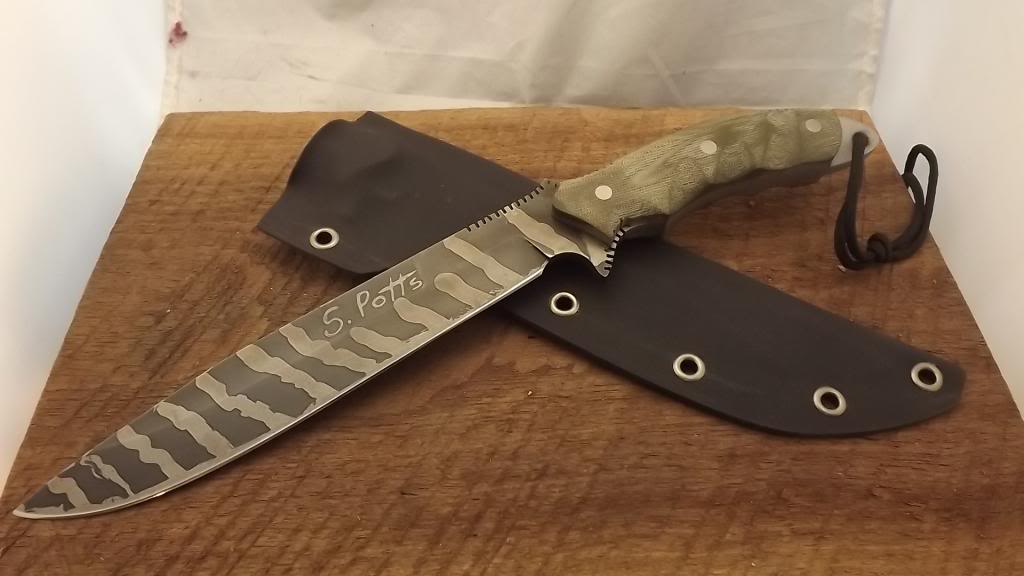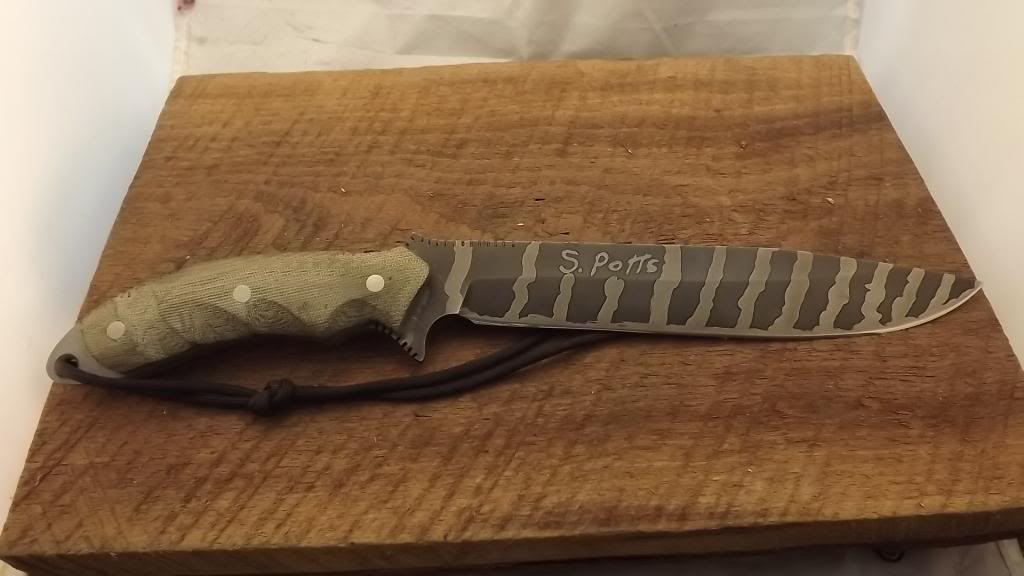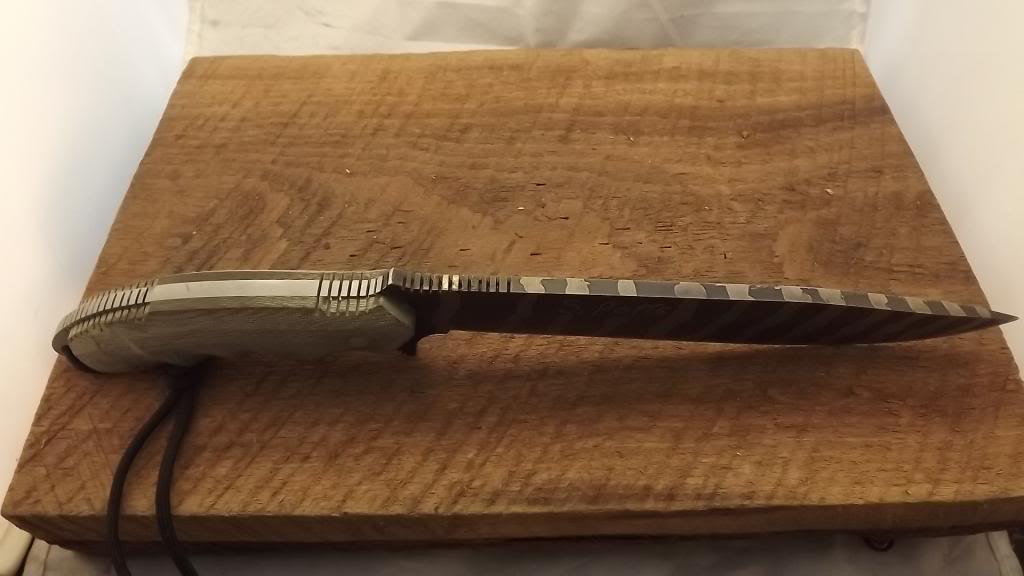OK after making a few large knives here latly and playing with them a bit I decided to make one for myself, to replace my old military machete I use once or twice a year...lol. I decided on 14" and a nice thick handle. This knife is constructed of 1/4" stock thickness 0-1 tool steel (its really 17/64). I only hand sanded the grind marks out of the blade, i always do that before heat treat for several reasons, after heat treat I bead blasted the blade then painted a few strips on it and then put it in acid bath, really just to do something cool without the need for hours of sanding. The handle is made from 3/8" thick scales of olive canvas micarta shaped with rasp then bead blasted, that along with the grooves cut into handle it shouldn't go anywhere. I plan on beating it around this weekend. No loops or anything on sheath as I will never carry on belt, just need a safe place it keep it.
14 1/4 total length
blade 8 1/5"
handle is green canvas micarta, with bead blast finish
sheath is kydex.
[Broken External Image]



14 1/4 total length
blade 8 1/5"
handle is green canvas micarta, with bead blast finish
sheath is kydex.
[Broken External Image]













